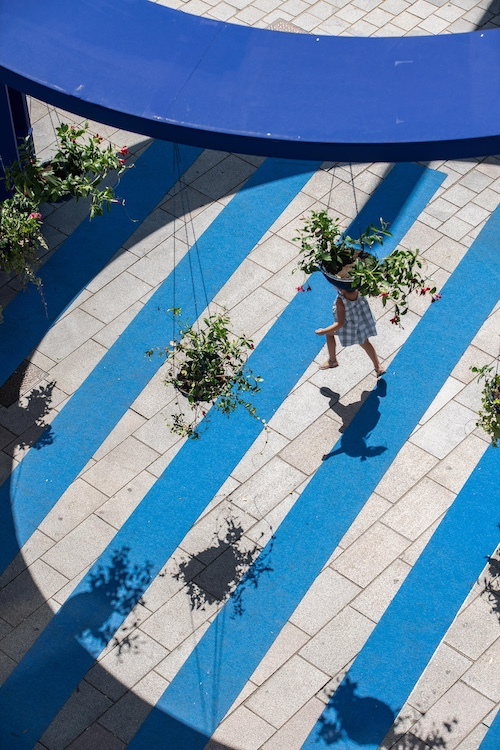
Perhaps no US city better illustrates the richness and complexities of the built environment than Chicago. Central to the history of skyscrapers, modernism, and urban design, Chicago has long been an intellectual and creative hub for those interested in cities. At the same time, its landscape has been—and continues to be—shaped by structural inequities and the community-based changemakers who fight them.
MAS Context is a nonprofit organization that situates this spectacular and complex history in a global context, while enhancing contemporary discourse and helping shape the future of how people engage with place within Chicago and beyond.
Now in its 15th year, MAS Context offers an array of public events, publications, and creative collaborations. Among its offerings in 2024 is “Welcome to Tribuneville: An Imaginary Vision of an Old Chicago That Could Have Been,” a giant installation of architectural cartoonist Klaus’s retro-futuristic drawing of downtown Chicago. The 150-foot-wide animation features over 60 unbuilt proposals from the 1922 Tribune Tower’s architectural competition, a legendary contest among architects but lesser-known to the broader public. Archinect described “Welcome to Tribuneville” as an “excellent way not only to delve into the rich history of high-rise architecture in Chicago but also enjoy the superlative work of the Spanish-born illustrator,” all from a downtown Chicago River perch.
MAS Context also brings together architects and community organizers to discuss creative solutions to historical problems. A recent public event, A Lot With Little Chicago, featured five Chicago-based architects and community leaders engaged with social impact and adaptive reuse. The program discussed the creative rehabilitation of vacant school buildings around the city, including the Aspire Center in Austin, the Overton Center for Excellence in Bronzeville, and The Regenerator in Englewood. It was also accompanied by the US premiere of a global film installation presented by MAS Context and curated by Noemi Blager.

In addition to in-person events, MAS Context’s website serves as an extensive and ever-growing online archive of journals, articles, photo essays, oral histories, and more. For example, in her monthly column, Chicago-based architectural historian Elizabeth Blasius explores changes to the built environment and the forces—economic, social, and political—that have shaped these changes. In an essay about the history of preservation in Chicago, Blasius highlights the stewardship of historic buildings by Black Chicagoans during the Great Migration, a practice that has largely been overlooked by traditional preservation narratives.
“Generous multiyear support from the Richard H. Driehaus Foundation has been vital to MAS Context’s development. The Foundation’s institutional and economic support is invaluable to producing our programs and publications that support emerging designers, celebrate previous generations, and nurture a community to share important work and ideas about the built environment,” says Founder and Editor in Chief Iker Gil.
By bringing together creative thinkers from across disciplines, MAS Context plays an important role in Chicago’s creative ecosystem, asking us to consider: What stories are we telling about our cities? How do we learn from our past and from each other, in order to build a better future?
Iker Gil is the executive director of MAS Context.


